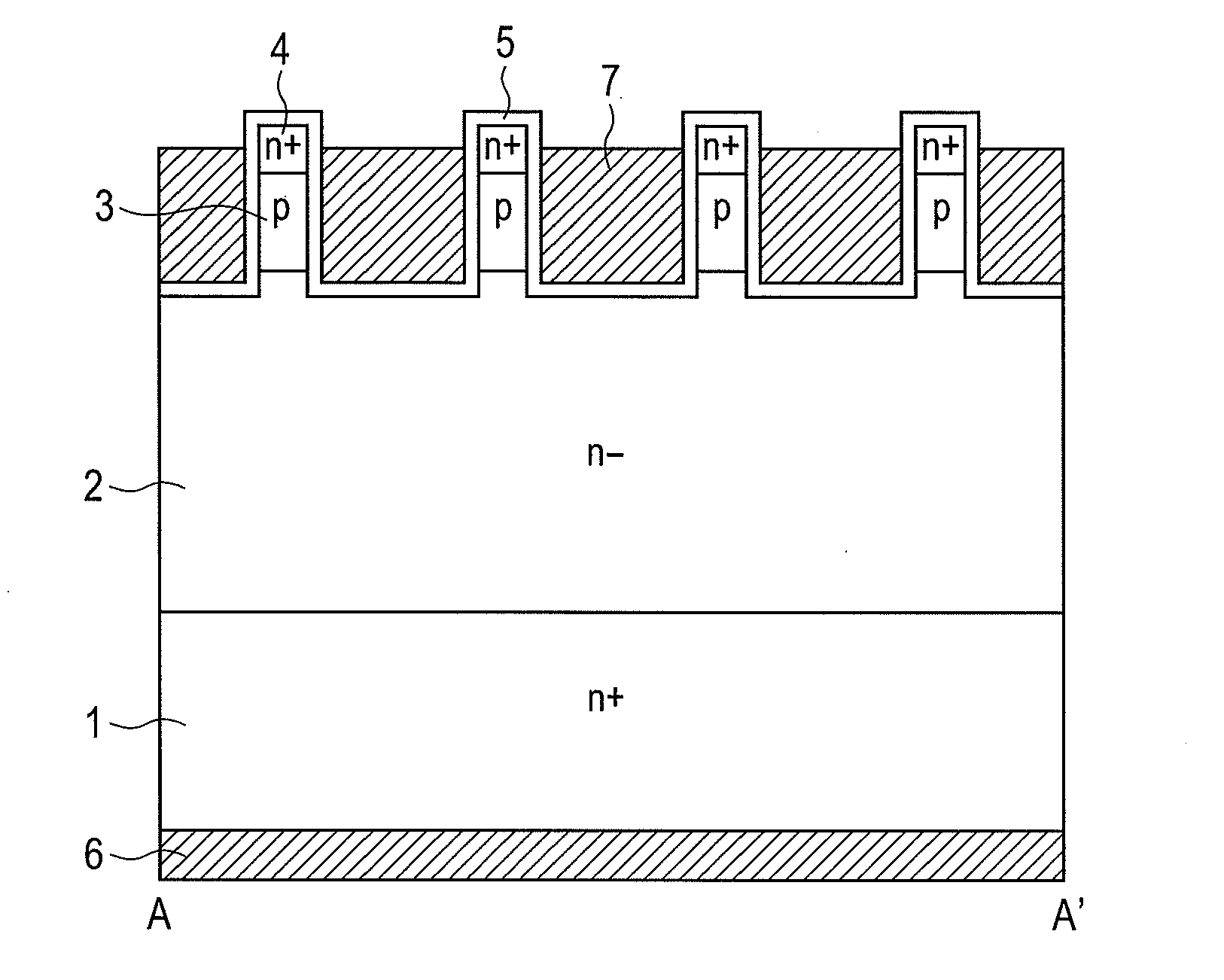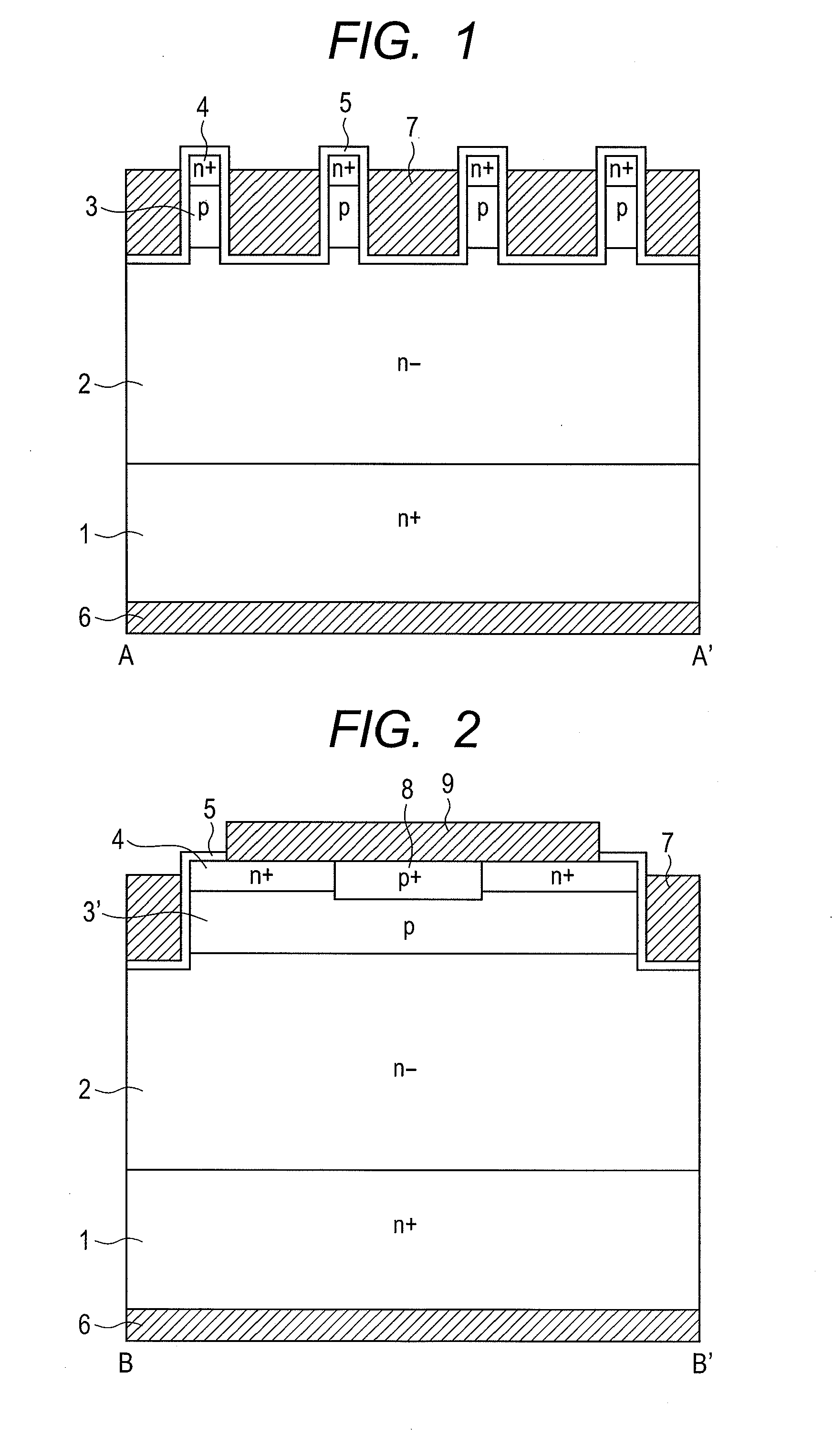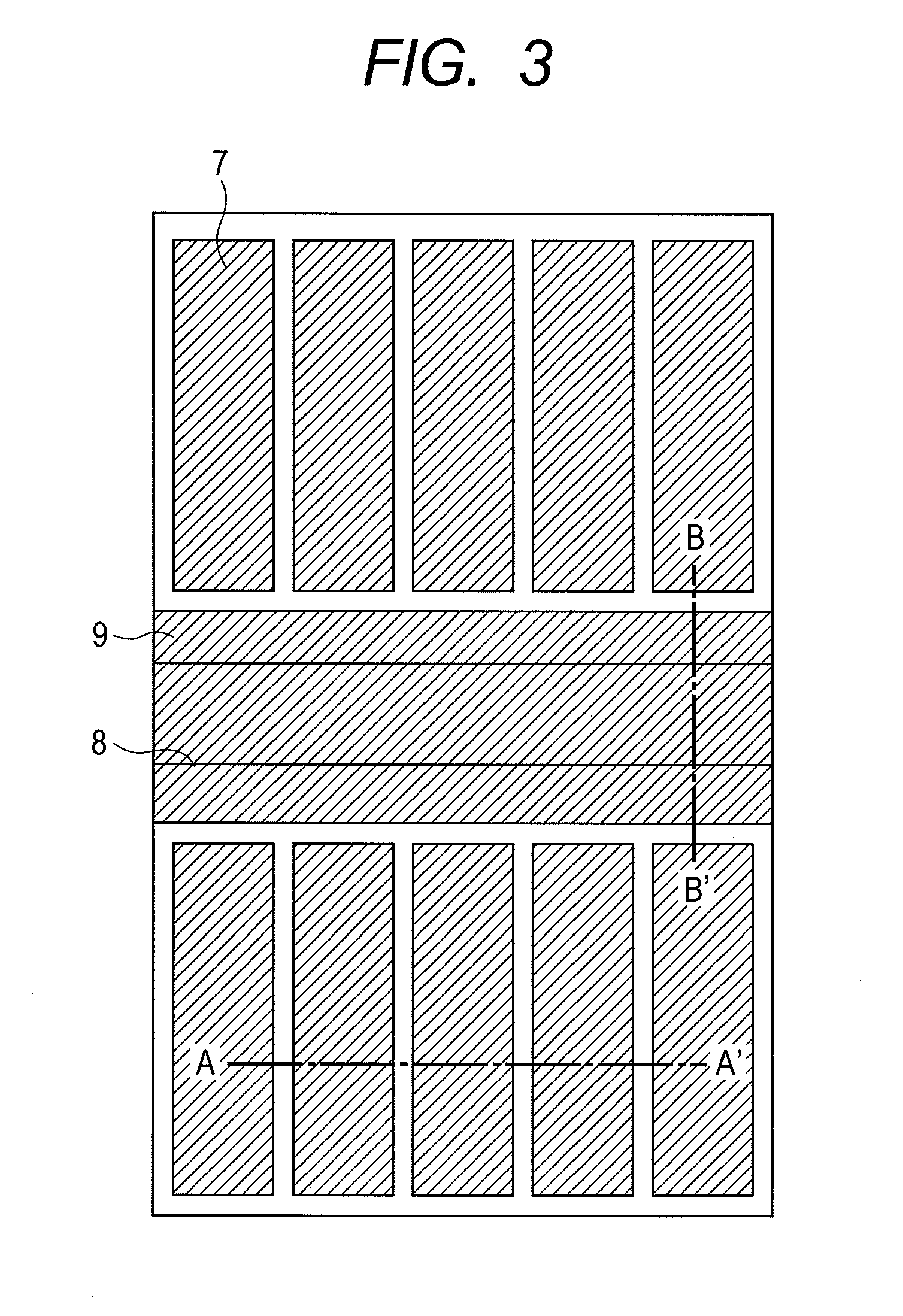Semiconductor device with large blocking voltage and manufacturing method thereof
a technology of blocking voltage and semiconductor, applied in the direction of semiconductor devices, basic electric elements, electrical appliances, etc., can solve the problems of low channel mobility and no effective measures to reduce threshold voltage, and achieve the effect of reducing threshold voltage, low threshold voltage, and large channel mobility
- Summary
- Abstract
- Description
- Claims
- Application Information
AI Technical Summary
Benefits of technology
Problems solved by technology
Method used
Image
Examples
first embodiment
[0063]The embodiments of this invention are described next while referring to the drawings. FIG. 1 and FIG. 2 are drawings showing the cross sectional structure of the UMOSFET of this invention. FIG. 3 is a drawing showing a flat layout view of the UMOSFET of this invention. The section taken along lines A-A′ in FIG. 3 is the same cross section in FIG. 1; and the section taken along lines B-B′ is the same cross section as in FIG. 2. A drift region 2 for the n− epitaxial layer is formed on the drain region 1 of the n+ substrate formed from silicon carbide as the base material. A p body region 3 and an n+ source region 4 are respectively formed on the drift region 2, and trenches are formed so as to pierce through the n+ source region 4 and the p body region 3. A gate insulating film 5 made from oxidized film is formed on the upper section of the source region 4 and of the bottom and side walls of the trench; and a gate electrode 7 is embedded within the trench via this gate insulatin...
second embodiment
[0075]FIG. 14 shows a cross sectional structural view of the second embodiment. The second embodiment differs from the first embodiment in the point that due to channel doping, the channel concentration is lower than the p body region 3 concentration near the trench side walls. Forming a channel layer 10 with a concentration lower than the p body region 3 allows using a lower threshold voltage than the first embodiment and also allows raising the current density.
[0076]The fabrication process for the present embodiment is basically the same as the first embodiment and differs only in the point that the channel layers were formed by sloped ion implantation after forming the trenches. The condition for sloped ion implantation was 15 keV at a dosage of 5×1011 cm−2. All other design values were the same as the first embodiment. Channel doping was used to form channel layers of 5×1016 cm−3 at a width of approximately 50 nm from the trench side walls. Special characteristics were a drop in...
third embodiment
[0077]The third embodiment of this invention is described next utilizing the device planar structural view shown in FIG. 15. The point where this embodiment differs from the first embodiment is the position relation of the wide area 3′ and narrow area 3 on p body region. In the first embodiment, the wide area 3′ and narrow area 3 of the p body region width are arrayed in straight line relative to each other. In the layout of the present embodiment however, the wide areas 3′ of the p body region width are in a matrix, and the narrow areas 3′ of the p body region width connect between them.
[0078]The operation and method for fabricating the present embodiment are the same as the first embodiment. However the optimal embodiment for use depends on the circumstances. The present embodiment for example is superior in terms of surface area when the width of the wide area 3′ of the p body region is wider than the depth of narrow area 3 of the body region. In the first embodiment, the width o...
PUM
 Login to View More
Login to View More Abstract
Description
Claims
Application Information
 Login to View More
Login to View More - R&D
- Intellectual Property
- Life Sciences
- Materials
- Tech Scout
- Unparalleled Data Quality
- Higher Quality Content
- 60% Fewer Hallucinations
Browse by: Latest US Patents, China's latest patents, Technical Efficacy Thesaurus, Application Domain, Technology Topic, Popular Technical Reports.
© 2025 PatSnap. All rights reserved.Legal|Privacy policy|Modern Slavery Act Transparency Statement|Sitemap|About US| Contact US: help@patsnap.com



